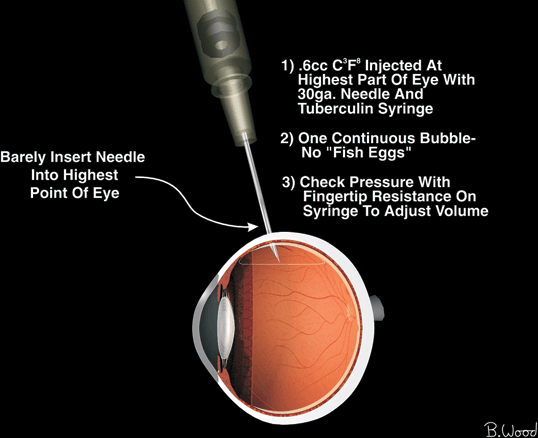Figure 12.1  Gas injection is performed at the highest point of the eye with the patient lying on his or her side.
Gas injection is performed at the highest point of the eye with the patient lying on his or her side.

Figure 12.2  Inserting the 30-gauge needle just barely into the eye ensures having a single bubble.
Inserting the 30-gauge needle just barely into the eye ensures having a single bubble.
If the breaks could not be treated before gas injection because of a bullous detachment, retinopexy can be performed 1 or 2 days after the gas injection when the subretinal fluid has pumped out. The laser indirect ophthalmoscope is preferred to the 3-mirror contact for postreattachment retinopexy (Fig. 12.3). If there are concerns about the ability to visualize the breaks after reattachment, preattachment retinopexy with transscleral cryopexy can be utilized.

Figure 12.3  Retinopexy is performed with transconjunctival cryopexy before gas injection or using the laser indirect ophthalmoscope as shown.
Retinopexy is performed with transconjunctival cryopexy before gas injection or using the laser indirect ophthalmoscope as shown.
IN-OFFICE FLUID-GAS EXCHANGE
Postvitrectomy retinal detachment without traction or PVR or hemorrhage patients can be managed by in-office fluid-gas exchange using isoexpansive concentrations of C3F8 (16%) or SF6 (25%) (Fig. 12.4). The injection needle is positioned 3 to 4 mm posterior to the limbus at the highest part of the eye as in pneumatic retinopexy. The needle is advanced only 3 mm into the eye to avoid multiple bubbles. This 32-gauge needle is connected via a short piece of tubing to a 30- to 60-mL air- or gas-filled syringe operated by the assistant. A second 25- to 30-gauge needle, depending on the viscosity of the intraocular fluid, is positioned 4 mm posterior to the limbus, at the lowest portion of the eye. This needle is connected to a tuberculin syringe, with the plunger removed, to act as a handle. The open end of this needle is positioned over a waste can to collect the fluid. The exchange is continued until gas appears in the egress needle. The egress needle is withdrawn and the intraocular pressure adjusted using the gas syringe and tactile assessment of the IOP with a sterile applicator stick.

Figure 12.4  In-office two-needle (30-gauge injection, 25-gauge egress) fluid-gas exchange is performed in patients who develop retinal detachment after vitrectomy. This technique ensures a complete fill with an isoexpansive concentration of long-acting gas.
In-office two-needle (30-gauge injection, 25-gauge egress) fluid-gas exchange is performed in patients who develop retinal detachment after vitrectomy. This technique ensures a complete fill with an isoexpansive concentration of long-acting gas.
Stay updated, free articles. Join our Telegram channel

Full access? Get Clinical Tree


